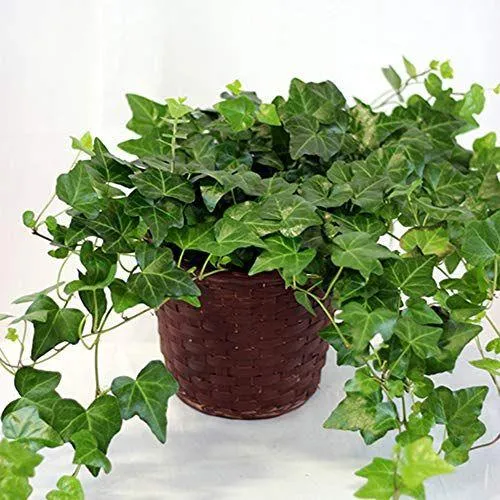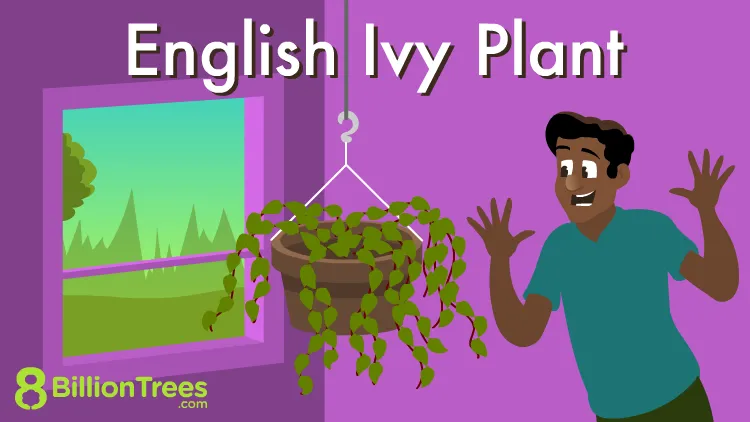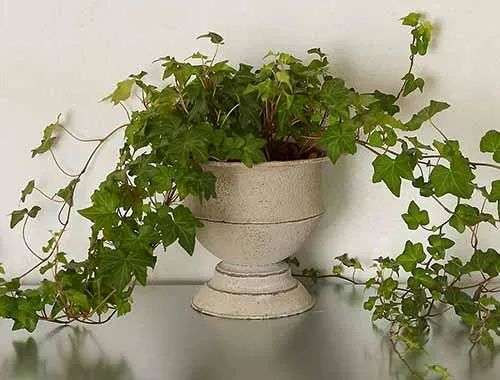All You Need to Know About Using English Ivy as a Light-Filtering Plant
English ivy is a wonderful climbing vine that can serve various purposes in the landscape, and one of the less common uses is as a natural light filter. If you’ve searched for “english ivy light”, chances are you’re wondering if ivy can help reduce glare and brightness in certain areas. In this article, I’ll cover the basics of using ivy for light filtering as well as answer some common questions people have on this topic.
How Does English Ivy Filter Light?
English ivy has dense foliage that’s effective at blocking a good amount of direct sunlight. The leaves are dark green and overlap each other, creating a layered effect as the vine climbs and spreads. This layered leaf coverage is what allows ivy to filter out a significant portion of light rays before they reach a surface.
From my own experience growing ivy on an arbor, I’d estimate it reduces light transmission by 60-70% during the summer months. The shaded area underneath stayed nicely cool even on hot sunny days. Of course, the exact light-filtering capability depends on factors like leaf density and how thickly the ivy is growing.
Areas Where Ivy Works Well as a Light Filter
- Around south and west-facing windows to cut glare from low-angle afternoon sun
- On trellises and arbors above patios or seating areas for shade
- Climbing walls and fences to shade exterior spaces like balconies
In all these cases, positioning the ivy a few feet away from the light-exposed area allows it to perform its light-diffusing function without blocking views or creating an enclosed space. I’ve used it successfully in my backyard in these kinds of applications.
Maintaining Light Filtration as Ivy Matures
As english ivy grows larger, it may start blocking light too heavily if uncontrolled. Two key practices help sustain its light-filtering role over time:
- Prune back ivy in spring to thin out older stems and encourage new growth from the base. This refreshes the foliage density.
- Tie new stems to their support periodically so they spread sideways in a single thin layer, versus piling on top of each other.
With regular shaping and trimming, ivy stays full yet spread out for maximum foliage with minimum light blockage. It’s kind of like getting a haircut – a little maintenance goes a long way!
Will Ivy Reduce Glare Enough?
For most outdoor applications, english ivy provides significant glare relief from direct sun rays. However, it works best in combination with other strategies in very high-glare situations. For example, you could grow the ivy on the east or west facades of a structure and also use exterior sunscreens or shades.
I once helped a client who had major west-side glare problems in their backyard in the evenings. We planted ivy along their fence line but also hung retractable awnings to further cut the brightness. Together these methods totally solved the issue. Moral of the story – layering techniques gives you the best results against serious glare.
Other Plant Options if Ivy Isn’t Ideal
While english ivy excels as a light-filtering vine, it’s not suited to all areas due to various factors like climate. If ivy may not thrive where you live or if you simply prefer other plants, here are some terrific alternatives:

Climbing Hydrangea: Lovely flowers, lush foliage, thrives in part shade.
Climbing Roses: Fragrant blooms, coarser leaf texture filters light well.
Hardy Passionfruit Vine: Tropical look, edible fruits, very fast grower.
Sweet Autumn Clematis: Abundant small white flowers in late summer, quicker to cover than ivy.
The takeaway is – don’t limit your options to ivy alone. Experiment with other vines that bring their own aesthetic and horticultural qualities to the task. Variety is the spice of gardening!
Potential Drawbacks of Using Ivy as a Cover
While english ivy has proven itself as a reliable screen plant over decades of use, it’s always important to be aware of limitations. Here are a few potential downsides to consider:
– Ivy can be invasive in some regions if not contained properly. Keep it off the ground and away from surrounding plants.
– It may harbor pests like scale insects if conditions are right. Monitor foliage closely and treat any infestations quickly.
– Overgrown ivy can be difficult to fully remove if you change your mind later. Ongoing cleanup is key.

– It provides year-round foliage but no colorful flowers. Mix with other flowering vines if seasonal color is desired.
With the correct growing methods and maintenance routine however, ivy is easy to manage responsibly. I think the benefits overwhelmingly outweigh the occasional drawbacks. But it’s smart to head in with open eyes too.
Tips for Establishing Ivy as a Screening Plant
To get your ivy off to a successful start as a light-filtering cover, here are some tips based on what’s worked for me and other gardeners in my neighborhood:
– Plant ivy in autumn or early spring for best root development before the heat of summer.
– Give it a sturdy support like a fence, arbor or trellis to climb right from the beginning.
– Use soil amendments like compost to boost moisture retention if the area tends to dry out.
– Water newly planted ivy regularly until established, then as needed to prevent wilting.
– Fertilize in spring and summer with an all-purpose plant food to encourage fast growth.
– Prune lower leaves away to 6 inches above ground for better airflow and less wet foliage.

– Groundcovers like pachysandra can be planted underneath to fill in any gaps more quickly.
Following these basics should get your english ivy thriving in no time to serve as a functional, natural screen. Pretty sweet, huh?
In conclusion, english ivy makes an excellent choice for filtering harsh light when grown properly as a vertical screen. It thrives in most landscape situations and requires minimal care. For windows, patios and other outdoor spaces in need of sun modification, ivy delivers beautiful landscaping alongside practical shading functions. I hope this overview helped answer your questions on using ivy specifically for its light-filtering qualities. Let me know if any other aspects need more explanation!
English Ivy Light Requirements
| Light Level | Growth Rate | Leaf Color |
|---|---|---|
| Bright Indirect Sunlight | Fast | Dark Green |
| Low Light | Slow | Lighter Green |
| Full Shade | Very Slow | Yellowing May Occur |
| Direct Sunlight | Can Burn Leaves | Brown Spots |
| Artificial Light | Supplement Natural Light for Best Results | Adjust Light Intensity Based on Distance from Ivy |
FAQ
-
What type of light does english ivy prefer?
English ivy grows well in locations with moderate light. It can handle low-light spots but won’t thrive in really dark areas. Generally, eastern or western exposure with at least partial morning sun is good.
-
Will english ivy grow outdoors where it gets sunshine?
Yeah, english ivy can grow outside in spots that get some natural light. It does fine in partial shade though full sun may dry out the soil too fast. You gotta give it at least a few hours of direct sun each day for the best growth.
-
How long does it take for english ivy to grow?
The pace of growth for english ivy can vary quite a bit based on conditions. In perfect circumstances, it may spread a foot or more per year. However, it will still spread just may take longer, like 6 months to a foot, in less than ideal light. As long as their basic needs are met, english ivy will grow gradually.
-
What happens if english ivy doesn’t get enough light?
If an english ivy plant is getting very low light, like in a mostly dark room, it may struggle to survive. The leaves will become small and sparse. It may even drop its existing foliage. Nevertheless, english ivy is pretty resilient and can bounce back if moved to a brighter spot. Just be careful not to let it get too sparse or it could have trouble recovering.
-
Can english ivy climb trees?
Yup, english ivy is a vigorous climber that can scale trees easily when given support. It will attach itself to the bark using tiny root-like structures. Then it will climb higher and higher each year. However, some people say ivy can be bad for trees since it may become too heavy or block sunlight if not kept in check. You basically gotta prune it regularly so it doesn’t overwhelm the tree.

-
What happens if you plant english ivy in the ground?
If english ivy is planted directly in garden soil and given enough moisture, it will likely spread rapidly. That stuff can grow like mad once it’s in the earth. Within just a year or two, an ivy planted in the ground may take over a large area. It will form a dense low groundcover. However, it could become difficult to remove later if you change your mind.English ivy works well as a groundcover but you gotta keep it contained!
-
Is english ivy poisonous?
While english ivy looks pretty, you gotta be cautious around small kids or pets because certain parts are basically poisonous if eaten. The berries can cause vomiting or diarrhea in humans. For dogs, consuming large amounts of leaves or stems may result in depression or respiratory issues. It appears the toxins can irritate the mouth and stomach. So keep ivy plants out of reach of children and animals if possible.
